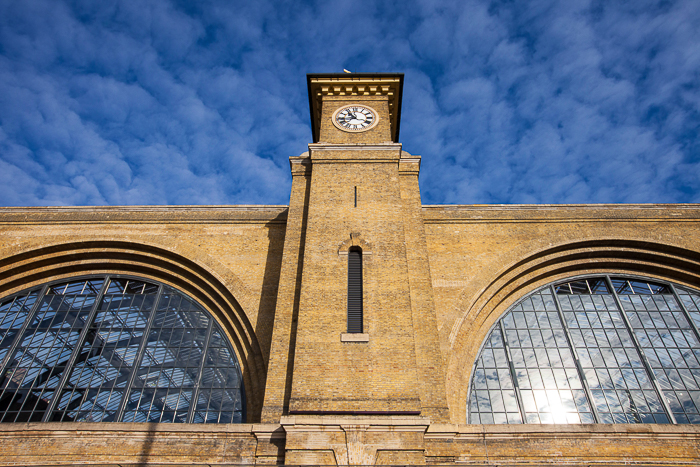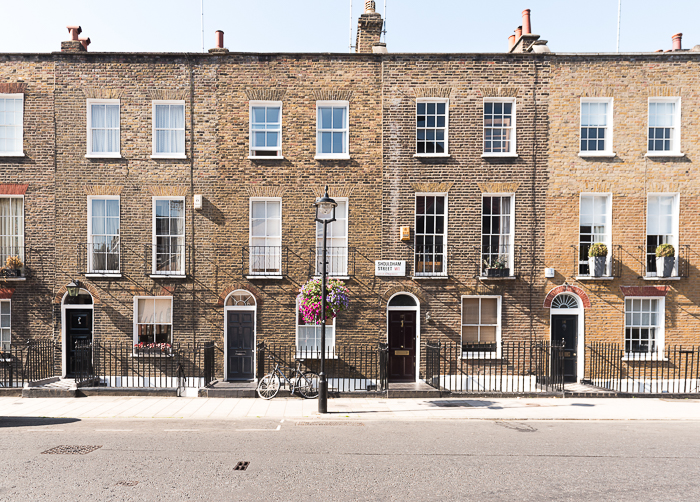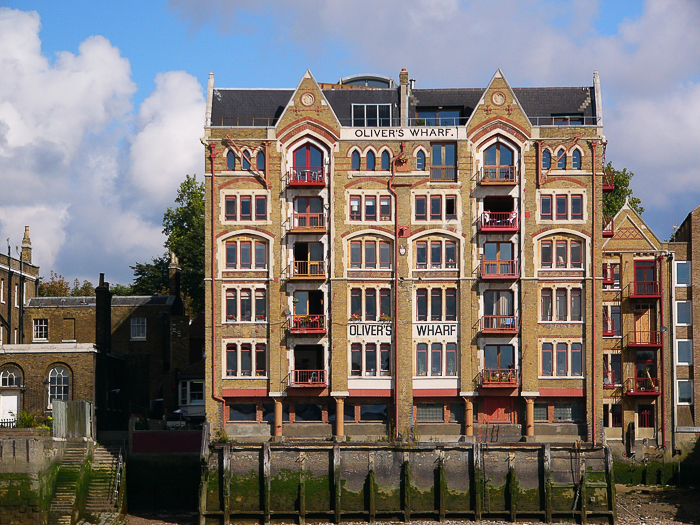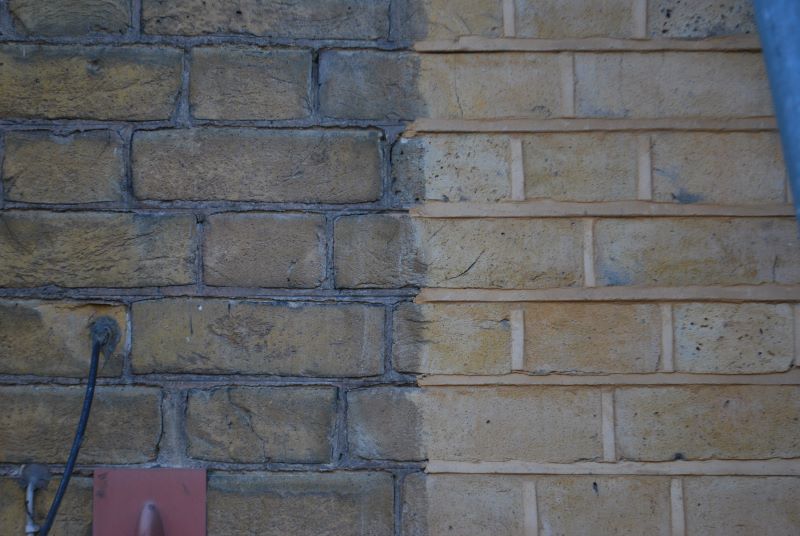Ulrike Wahl, stonemason, surveyor and SPAB Fellow writes a love letter to London stockbrick, arguably an urban vernacular material.
The London stockbrick is the most familiar material to make up the fabric of London, yet it is one that receives relatively little attention. Pevsner likened its effect on the street architecture of the city to the use of Bath stone in Bath. However, whilst most people recognize the beauty of the latter, the London stockbrick is too often considered common, dirty, and possibly slightly miserable – if it is considered at all.
Yet it is a great brick! There is beauty in its variety of colour and texture, and it is durable and resistant to the worst of London’s pollution. It has a rich craft tradition, spanning two hundred years or more. Christopher Wren already recognized the potential of the raw material when he said that “…the earth about London, rightly managed, will yield as good brick as were the Roman bricks … and will endure, in our air, beyond any stone our island affords'.

Kings Cross Station © Chris Dorney
It is often claimed that London stockbricks were made from London clay or even that the yellow colour derived from the colour of the clay. In fact, they were made from brickearth, which is found just below the soil in southeast England. The brickearth is a wind-blown loess deposit of the Pleistocene age (the last ice age) and consists of finely divided silica, with only a small proportion of clay minerals and an unusually high calcium carbonate content.
Unlike London clay, it could be easily dug up and worked by hand. The high silica content of the brickearth leads to brittleness and a susceptibility to failure and therefore other ingredients had to be added to produce a sound brick. Ground up chalk increased the plasticity of the mix, reduced contraction during drying and acted as a flux during firing. Incidentally, it also changed the fired colour from a light pink to yellow-brown.
Sifted town ash, in effect the swept-up debris of London’s fireplaces, was also added. This made the clamp-burning more efficient and prevented contraction during drying and improved the colour of the brick. It also helped reduce the rubbish heaps of London and so could be considered an early form of up-cycling. Or as Richard Perks puts it more humorously: ‘It was in this fashion that London came to be built out of the contents of its own dustbins’. The town ash was not always sifted, of course, and everything from small bones to fragments of clay pipes can be found in the bricks.

Victorian terraced houses © Essential Images
 Brick had become more popular in London from the early 17th century onwards, with an acceleration after the Great Fire in 1666. Most early bricks, however, were red. The change to recognizable yellow London stockbricks, or ‘malms’ as they were originally called, cannot be dated accurately, though there are certainly some early ones at Hampton Court Palace from around 1718.
Brick had become more popular in London from the early 17th century onwards, with an acceleration after the Great Fire in 1666. Most early bricks, however, were red. The change to recognizable yellow London stockbricks, or ‘malms’ as they were originally called, cannot be dated accurately, though there are certainly some early ones at Hampton Court Palace from around 1718.
Isaac Ware is commonly credited with popularizing the yellow brick with his 1756 book ‘A Complete Body of Architecture’. In it, he advocated the use of a brick that is as close in colour to stone as possible to create a harmonious Palladian façade.
The Georgian builders certainly took his advice and brickyards sprang up all over central London to produce this cooler- coloured brick more or less out of the foundations of the buildings that were being erected.
As London expanded, the brickmakers moved out further with the bricklayers who were building the rapidly growing metropolis. At first, the brickyards were temporary and in places like Hackney and Camden, but towards the end of the 19th century there were large permanent brickworks outside of London. The most famous of these was Smeed Dean in Sittingbourne, Kent.

Oliver's Wharf © Elzbieta Sekowska
The process involved in making London stocks was complex and required a highly skilled workforce. As well as creating a successful mix of brickearth, chalk and town ash, the bricks needed to be moulded, dried, and burnt. Due to the impermanent nature of the earlier brickyards and the inclusion of some of the fuel in the brick itself, London stocks were burnt in clamps and not kilns.
In a clamp, the bricks were stacked close together, with additional fuel between them, in order to create a steady uniform heat, which vitrified the bricks without melting them. The ideal temperature is around 1050oC. However, clamp-firing is an uncontrolled process and there are great differences in temperature which results in a large number of over- and under burnt bricks. So, after dismantling each clamp, the brickmakers also needed to sort the bricks into their various grades and uses.
It is worth noting that stockbricks were handmade even after machines for tempering and moulding bricks became available in the 1840s. Mechanization was not cost-effective for the small brickyards of London, especially as they were itinerant and moved as soon as a seam of brickearth had been exhausted. The limited plasticity of the brickearth, as well as the inclusion of the town ash, also meant it could not be extruded as a column. So even in large brickyards like Smeed Dean they were handmade until the Second World War.
When production re-started after the war the bricks were made by machine and the clamps fired by gas. After the Clean Air Acts 1956 and 1968, supplies of suitable town ash for mixing with the brickearth also became scarce and breeze from coal-fired power stations used instead. It therefore seems justifiable to describe any London stocks made after the Second World War as ‘modern’ and distinctly different, both in manufacture and in materials, to the traditional brick.
London stockbrick in Hackney, spun back with an angle grinder (right) © Ulrike Wahl.
Though Isaac Ware was credited with popularizing a yellow brick for London, the actual material evolved from the available raw materials in response to a need. The need was to build the infrastructure of the first modern metropolis of the world and house its rapidly growing population. This need was met with a durable, cheap, and low maintenance material that was not ‘invented’ but developed and produced by generations of brickmakers.
This, it can be argued, is what makes the London stockbrick a vernacular material. Vernacular is defined as ‘the local language of building, using local materials and working within local tradition’ and is generally used in a rural context rather than an urban one. Perhaps one should question this narrow definition and start to consider the possibilities of the urban vernacular.
The yellow-brown brick was popular with Georgian architects, but Victorian architects despised London stockbricks, and G.E. Street even called them ‘a most vile material’. The small-scale builders of London, however, continued to use them even when Flettons, dense pink patchy bricks, were available at half the price. This was clearly ‘using local materials and working within local tradition’ in the face of other and cheaper options.
But it was not just the house builders that prized this vernacular material that ‘will endure… beyond any stone our island affords…’. Joseph Bazalgette’s sewers were constructed in stockbricks, as were the railway viaducts and many of the railway stations. Even if the architects’ aesthetic sensibilities were offended, the engineers knew to choose the local material that would do the job.
Which brings me back to Nikolaus Pevsner and the effect of the London stock brick on the street architecture being akin to the use of Bath stone in Bath. Because this is London the material is not elegant and beautiful but utilitarian and resilient. On closer inspection though there is infinite beauty and variety to be found in the colour and quality of the bricks and much greater appreciation and care should be shown for what Alec Clifton-Taylor poetically called ‘London’s sad and beautiful browns…’.
This article first appeared in the SPAB Magazine, a benefit of membership. Not yet a member? Join us.

